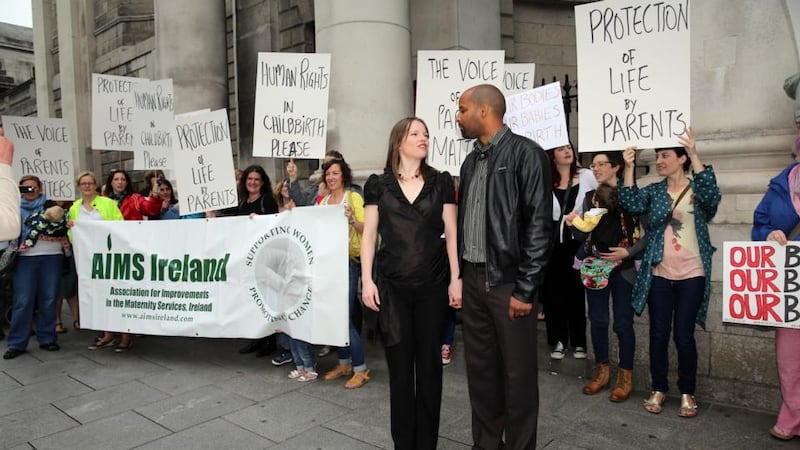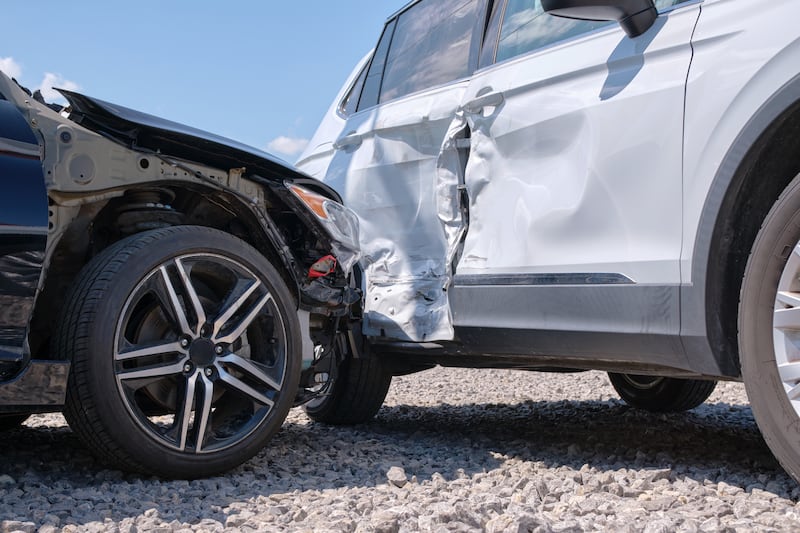Is home birth safe? It depends on who you ask.Women who have had their babies at home are often evangelical about the experience. For the HSE, which has a long list of criteria under which it won’t support the practice, there is much emphasis on the risks.
The ESRI says there were 168 planned home births attended by a midwife in 2011, representing 0.2 per cent of all births. By contrast, 2.5 per cent of all births in the UK take place at home, and 20 per cent of all births in the Netherlands are home births. A study of Dutch births published in the British Medical Journal in June found that planned home births there were less risky than planned hospital births.
The study found that among “low-risk mothers”, the risk of severe complications was one in 1,000 for home births and 2.3 in 1,000 for hospital births.

The risk of being admitted to intensive care or needing a large blood transfusion was small and similar among first-time mothers giving birth at home and in hospital. In women who had given birth before, however, severe complications were found to be less common during planned home births.
Ireland's Nurses and Midwives' Bill (2010) is unlikely to lead to an increase in Irish rates of home birth. This made law that the State Claims Agency would not indemnify self-employed community midwives assisting home births for women who fall outside the HSE's criteria for risk.
Risk factors
Citing everything from asthma to having had a previous Caesarean section, the HSE's National Homebirth Service says such factors render a woman at too great a risk for inclusion in the State's home-birth service. In two further lists, which include factors such as being over 40 and having fibroids, a woman can be included in a homebirth service only after assessment by a consultant obstetrician.
Meanwhile, the number of home births in Ireland is falling. The ESRI figures show the number of planned home births attended by a midwife has fallen by 41.7 per cent over the past decade while the decrease since 2010 is estimated at 5.1 per cent.
"I think the culture around home birth here is certainly one of fear on the part of health professionals," says Declan Devane, professor of midwifery at NUI Galway. "We haven't had a very strong history of supporting different models of maternity care in Ireland."
Is the State exercising due caution or does it have a severe case of risk aversion? The High Court will answer that question on Friday, when it delivers its verdict in the case of Kilkenny woman Aja Teehan, whose second child is due in October.
Teehan has taken a case against the HSE arguing that a previous Caesarean section should not preclude her from having a home birth. She alleges that their refusal to cover the birth of her baby at home breaches her rights. Physically fit, a yoga practitioner and a runner, she doesn’t view the risks in the same way as the HSE.
Devane says that while some might perceive it unsafe for a woman who previously had a Caesarean section to have a home birth, it depends on how those risks are interpreted. He says the biggest risk to such a woman is uterine rupture.
“The risk of that on average would be somewhere around 50 per 10,000, but it’s all about how you present the data. It’s the same as saying one in 200 will rupture; or 99.5 per cent or 199 out of 200 women will not have a rupture.”
While some women may be comfortable with this level of risk, the HSE is not, and it will not insure a community midwife to attend their home births.
Survey results
Figures from bump2babe.ie, a site supported by the Cuidiú, the Irish Childbirth Trust, show that hospital births in Ireland are not all plain sailing. In a survey sent to Ireland's 22 maternity units, hospitals were asked to share information on their rates of induction, Caesarean births, episiotomies and other details, during 2009.
The results show that women can be twice as likely to undergo a Caesarean section depending on the hospital in which they give birth. The highest proportion of Caesarean sections, at 38.7 per cent, were performed at Mount Carmel Hospital in Dublin; the rate at St Luke's General Hospital in Kilkenny was 35.6 per cent of all births. At Sligo General Hospital, 18.9 per cent of all babies were delivered by Caesarean. At Kilkenny hospital, 43.2 per cent of first-time mothers underwent Caesarean sections, compared with 22.1 per cent at the National Maternity Hospital in Dublin.
On rates of spontaneous vaginal birth, with no requirement for ventouse, forceps or Caesarean section, excluding maternity-led units at Our Lady of Lourdes Hospital in Drogheda and Cavan General Hospital, mothers at Sligo General Hospital required the least intervention with 68.7 per cent of all births being spontaneous, while mothers at South Tipperary Hospital received the most intervention, with 52.3 per cent of all births being assisted in those ways.
Bad experience
The spokeswoman for the Homebirth Association of Ireland, Eva Goussot, says many women choose home birth because they have had a bad experience of hospital birth. "I can understand someone who had come out of hospital having had a Caesarean wanting something different. If the hospital you gave birth in has a 43 per cent Caesarean rate for first-time mothers, which is three times the World Health Organisation recommendation, I can understand how you would start to ask questions about the birth you had."
Goussot, who is soon to give birth to her second child at home, says the main reason more Irish women aren’t giving birth at home is because they aren’t being informed about it. Her experience of Irish GPs is that they are either unaware of home birth or frown upon it.
“In the UK, they provide you with information about your choices but you’re allowed to make your own choice. Informed decision-making is very much respected. I think that’s the problem in Ireland. We don’t have a culture that respects individuals’ decisions.”
Dr Fionnuala Breathnach, a consultant obstetrician at the Rotunda Hospital in Dublin, acknowledges that while studies report excellent outcomes for women who achieve delivery at home, the same cannot be said of those who require transfer to hospital during labour because of foetal or maternal complications.
“As many as 50 per cent of women who intend to deliver their baby at home don’t actually deliver at home,” says Breathnach. Reasons can vary from “the need for stronger pain relief, to a labour that isn’t progressing, concern about foetal heart rate or the requirement for a Caesarean section. “There is a big group that delivers in hospital because of a problem at home and they are somewhat swept under the carpet,” she says.
According to Breathnach, infrastructure that allows for speedy transfer to hospital is key. "I'm not sure that every corner of the country is set up for that in a way that it may be in other countries."
Options
Devane says for the large number of women precluded by HSE criteria from choosing a home birth, their options are: a hospital birth that they don't want; legal action; or a free birth, which means giving birth unassisted at home, for which he says there is anecdotal evidence.
“I’m not convinced that any of these are optimal,” he says. “Where a woman wanting a home birth decides to give birth without professional support, there are no winners in that situation among healthcare professionals, women or society.”
He calls for more individualised assessment of women by the HSE.
“At the moment there is a long list of criteria that require women to give birth in an obstetric unit. A better way of looking at this would be that these are criteria that require individualised assessment of the mother to determine the most appropriate place of birthing for her. There’s a stark difference.”
"There is no comparison really; it was a just a completely different experience," says Louisa Crowley, comparing her two home births with her two hospital births.
Having had her first two children at the National Maternity Hospital, and then training to be an antenatal teacher, Crowley opted for home births for her third and fourth babies.
“By then, I’d done a lot of research and any doubts I had were gone because I realised it was safe, if not safer, to have a home birth if you are having a normal, healthy pregnancy.”
At the recommendation of her community midwife, she had her blood tests done and had a 20-week scan at the nearby Rotunda Hospital.
“There was comfort in knowing I could go there if I needed to, but I was 100 per cent confident that my midwife knew what she was doing.”
She says her midwife’s regular visits during the pregnancy were more than just check-ups. “We’d spend lots of time chatting and getting to know each other. I felt I could ask her anything.
“They are so stretched in hospitals . . . every time you go in, you meet a different person. If people don’t give you the time, you just go around carrying a lot of fear because there isn’t time to ask questions.”
On the night of the birth, her midwife came to the house while Crowley’s other children slept upstairs. “She slept on the couch and I lay on the other couch and laboured through. She woke every so often to see if I was okay and I just did what I had to do.
“More than anything it was the freedom to move, to get comfortable, to change position. I didn’t feel I had that in hospital. At home, you do that automatically. You walk to the kitchen and waddle around there for a while and hold on to the door or whatever you need to do.”
Crowley got into the bath at 6.30am and Fia was born 30 minutes later.
The birth of her fourth child, Keeva, was a family affair. “The three of them [then aged nine, seven and five] were watching ‘Harry Potter’ on telly and they came in just as she was coming out. She was born in a birthing pool in the kitchen. They still talk fondly about it.”
Was Crowley ever frightened? “No. I expected that I might be, but I wasn’t. I felt I was absolutely in the right place and instinctively I felt this was right. I felt when I was at home, I was in the right place. It was blissful. It was fantastic, it really was.
“I think people who have home births are kind of considered to be hippies, or whatever, but I don’t tick that box and a lot of home-birth people I know don’t tick that box.
“Knowledge is power, and that’s the bottom line. I think most people just don’t know how safe it is to have your baby at home, as long as you have a healthy, normal pregnancy.”












